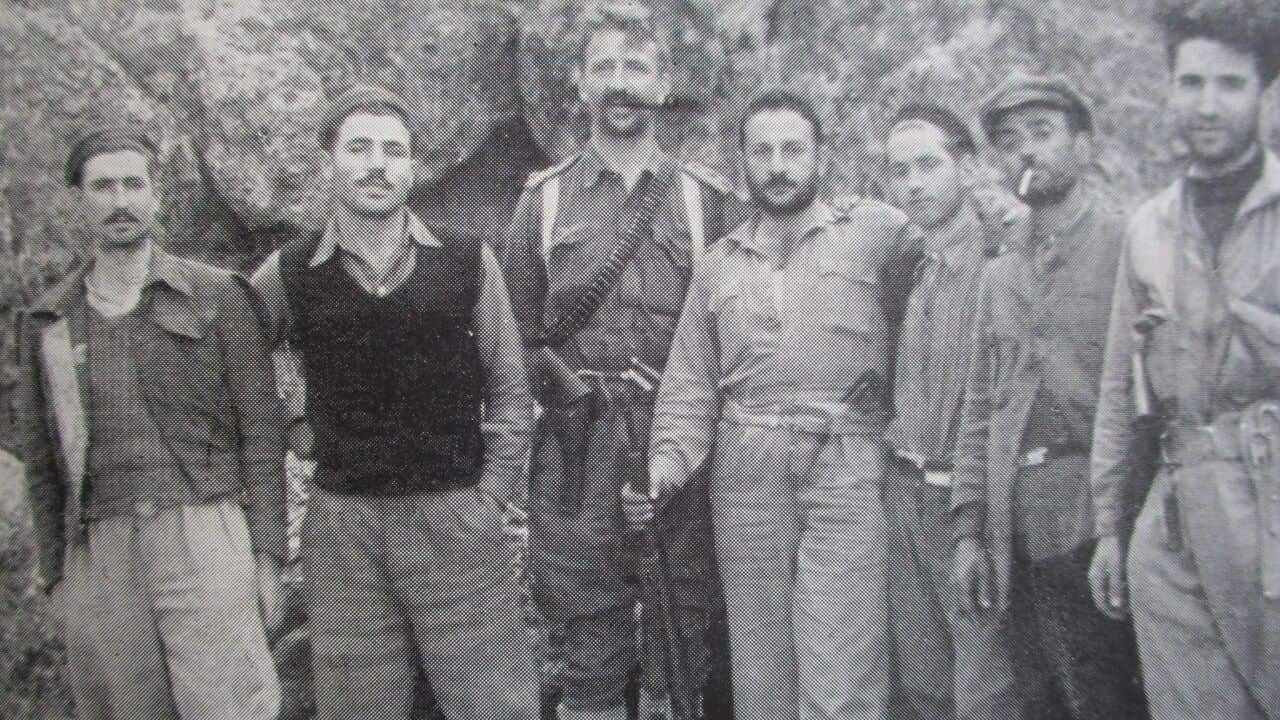Until Ruth Riordan saw a photo of her father dressed as a Cretan, the war her father fought in a faraway land was an abstract idea.
“He’d speak a bit of Greek just for fun, he grew a fig tree in every house we lived in and he’d go to the local café which was always run by a Greek, and drink coffee and speak Greek,” says Ms Riordan about her father." But apart from that, we didn’t know anything at all”.
It took a few more decades for her to find out that her father had a long story in Crete, which started soon after the 10-day ferocious battle in May 1941 where the Germans attempted their first and last airborne invasion.
Frank Ezzy, Ms Riordan's father, was taken a prisoner of war in June 1941. He, like thousands of Australians, News Zealanders and British troops, was taken to a POW camp outside of Chania, one of the largest towns in Crete. He escaped a few days later and took to the mountains. Relying on his bushman’s skills, he ended up in Koustogerako, an isolated village high up in the White Mountains, where he spent the next two years. “He didn’t say much about the war or his time in Crete. But just before he passed away, he became a bit more vocal about the war years, saying that he was proud of having fought,” says Ms Riordan.
“He didn’t say much about the war or his time in Crete. But just before he passed away, he became a bit more vocal about the war years, saying that he was proud of having fought,” says Ms Riordan.

Ruth with her father Frank. Source: Supplied
Tracing the footsteps
Setting out to retrace her father's footsteps back to the war and his years in a Greek village after that without much information, she knew she was entering a labyrinth. However, the story began to come to light and she learned how her father escaped from the POW camp and ended up in the White Mountains with three other allied soldiers who had also escaped.
“I believe at Agia Eirini Gorge, there was an elderly man minding his sheep who stumbled across the four escapees and took them down to his village,” she says.

Frank Ezzy Source: Supplied
When she was looking for information about her father, Ms Riordan got in touch with Ian Frazer, author of On the Run. Mr Frazer’s father also fought in Crete in WW2 and he had already spoken to many elderly Cretans and gathered information about Koustogerako that was also known as ‘Christ’s falcon’ (Christou geraki).
Among the testimonies Ian Frazer had collected were two women who spoke about “Fred” an Australian soldier who lived with their family during the war.
READ MORE

"They were the bravest people"
“For many years (Ian Frazer) couldn’t work out who this Fred was. Finally, we put two and two together and realised that it wasn’t Fred at all it was Frank and those two ladies were the two Georgiakakis sisters, only that they couldn’t say Frank they were saying Fred.
“That’s when I found out about Koustogerako and the two sisters who were still alive and remembered my father very well,” she recalls. ‘Frank Ezzy, Kyogle, Australia’
‘Frank Ezzy, Kyogle, Australia’

Ruth Riordan and Elisavet in Crete Source: Supplied
Books and persistence is what brought Ruth Riordan, a retired nurse and a talented artist, to uncovering the truth. But it was technology that shaped her next step as Ian Frazer had recorded the elderly Cretans’ responses to his questions.
“He played back to me one of the old ladies saying in her broken English what my father had taught her to say: ‘Frank’ – only it sounded like ‘Fred – Ezzy, Kyogle, Australia’. He had taught them those words.” says Ms Riordan as she recalls the defining moment in her search.
“I knew I had to go to Crete and meet those women and say ‘thank you’. They literally saved his life. If it wasn’t for them, I wouldn’t be here. My father wouldn’t have come back. They saved his life. I just had to go.”

The Georgiakakis family after the war. Chrisoula (first from the left) and Elisavet (first row from the left holding a baby). Source: Supplied
Ms Riordan first met Elisavet who she says was “full of personality and dynamism” and despite her advanced age and didn’t stop talking and crying and hugging her.
“She remembered my father and she still said ‘Frank Ezzy, Kyogle, Australia’. A couple of days later we met Chrisoula, who was very different to Elisavet, quiet and reserved, and then all started again with the hugging and the crying and the talking.”
She said when she told the sisters about passing away of her father, they insisted that she accept some money to place flowers on his grave on their behalf.
READ MORE

Forgotten ANZACS: 75 years on
At Koustogerako, Ms Riordan realised that for the Georgiakakis family her father was more than a soldier of the allies who defended the island. He was a son.
The family arranged for her to stay in the home of Vardis and offered her the room next to the one where her father slept. The house had passed onto one of Vardis’ grandsons and was renovated and extended. The room Frank Ezzy had shared with Vardis’ three sons had been converted to a storage room after the renovation.
“I spent many hours sitting on top of a potato sack looking at the beams and the rafters in the room where my father slept for two years, looking at the same ceiling as he did,” she says.
She recalls that she was welcomed into the Cretan family as a long lost but close relative who found her way back to where she belongs.
She visits Crete as often as she can and stays with Maria, Chrisoula’s daughter, who calls Ms Riordan ‘my Australian sister’. When Maria and Ruth spoke to SBS Greek for the first time, at one of the commemorative services for the 75th anniversary of the Battle of Crete at Galatas in Crete, they had their arms around each other.
“My grandfather, Vardis, had a family of nine. One more mouth to feed wasn’t an issue” Maria told SBS Greek at the time.
Maria and Ruth insisted that their bond is as strong as that of a blood relative.
Ms Riordan is learning Greek, she keeps in touch with many members of the Georgiakakis family. She cooks Greek food, and in her paintings, Crete and its people are a constant feature. She insists “Crete is the only place” for her. “I tried to analyse it, I tried to understand it. Is it God, is it fate, is it karma? What is it? I don’t know” Ms Riordan says wondering about her newly-formed bond.
“I tried to analyse it, I tried to understand it. Is it God, is it fate, is it karma? What is it? I don’t know” Ms Riordan says wondering about her newly-formed bond.

The 'thank you' letter, plaque and photo of Frank Ezzy, Ruth Riordan donated to the museum in Koustogerako. Source: supplied by Ruth Riordan
She is getting ready to go to Crete next year for the 80th anniversary of the Battle of Crete. She says that she is looking forward to meeting her Cretan family again, among them Elisavet who is turning 103 in October, to light a candle in the church at Koustogerako, to place flowers on Chrisoula’s grave and lay a wreath at the local monument for the heavy toll Crete paid for its fierce resistance in WW2. Then she plans to go to Galatas and have a coffee at Australia St.




